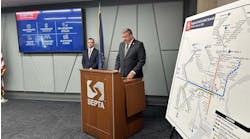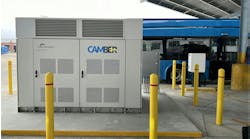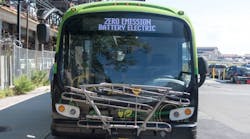Metropolitan Transportation Authority releases draft plan for redesign of Brooklyn Bus Network
The Metropolitan Transportation Authority (MTA) released a draft plan for a redesign of the Brooklyn Bus Network. The redesign seeks to expand all-day service to provide more travel opportunities, so customers can catch more buses without needing to consult a schedule. It proposes route modifications to fill in service gaps in the bus network to expand the reach of accessible public transportation, improve crosstown connections, balance bus stop distances and streamline circuitous routes. In total, the plan proposes 69 local routes and 19 express routes for a total of 88 routes, an increase from the 62 local and nine express routes that operate currently.
- Green for Local routes
- Purple for Rush routes
- Red for Limited routes
- Blue for Crosstown (SBS) routes
- Dark green for Express routes
Highlights
- Frequency increase on major corridors- Twenty-four routes would have increased service frequencies during part of the day. Many Limited and all Crosstown routes would be scheduled at 10 minutes or better between 6 a.m. and 8 p.m. on weekdays.
- New service, better connections- Nine new routes provide new connections and service:
○ Four new proposed routes: B40 Rush, B53, B55 Crosstown and B66 would operate 24 hours during the weekday
○ New B55 Crosstown provides faster connection between Brooklyn and John F. Kennedy Airport
○ New B5 LTD provides east-west connectivity to Gateway Center
○ New B40 Rush and B76 replace existing branches on B41 and B17
○ New B10 LTD provides faster connection between Broadway Junction and Prospect Park
○ New B81 connects Red Hook to Central Brooklyn
- Improved service to key destinations- The proposal aligns routes to provide new access points for customers, including:
○ B62 LTD provides new connection between Brooklyn Navy Yard and Queens
○ B64 provides additional service to Sunset Park Waterfront
○ B44 SBS extends to Coney Island Hospital
○ B49 and B68 swap terminals to better serve Kingsborough Community College
- Balanced stop spacing- Under the proposed redesign, the majority of routes have stop changes. The majority of customers who provided feedback chose faster trips over more bus stops. More balanced spacing between stops speeds up travel times. Brooklyn stops are currently an average of 830 feet apart on local routes, resulting in buses stopping as frequently as every one or two blocks. Stops in transit systems around the world range from 1,000 to 1,680 feet. The MTA considered factors such as stop usage, ridership, geography and impact to the community when making these operational decisions. Many retained stops serve high ridership areas that provide key connections and serve community facilities.
- A simpler network with more direct routing- Straightening routes by removing turns not only reduces delays but also creates a bus network that’s easier to understand by running relatively straight to their destination. An example is the proposed B16, which is streamlined to avoid narrow streets, remove turns and is also extended via Clarkson Avenue to serve Brooklyn hospitals. Additionally, proposals focus on eliminating route redundancy, particularly in congested areas such as Downtown Brooklyn to avoid buses blocking each other.
- New interborough connections between Brooklyn and Queens- The draft plan includes proposed route patterns that offer connections between the two boroughs. The Brooklyn Bus Network Redesign project team worked closely with the Queens Bus Network Redesign project team to coordinate proposals. Customers are encouraged to share feedback, which would be reviewed and used to strengthen proposals.
- Expanded bus priority- In collaboration with the MTA, NYCDOT identified several major corridors for possible future bus priority street improvements to accompany the network redesign to better support sustainable, all-day bus service. These corridors were chosen based on criteria such as ridership demand, demographics, bus performance, proposed new service levels and ease of implementation. NYCDOT has recently kicked off a study of Flatbush Avenue and will continue to analyze this corridor and others while working with communities to refine details of any future projects.
Outreach
The MTA will hold six stakeholder briefings beginning Dec. 2, and informal on-street engagements will begin in the following weeks at key locations throughout the borough, including busy bus hubs. The Agency will host 18 virtual workshops beginning Jan. 11, 2023.



